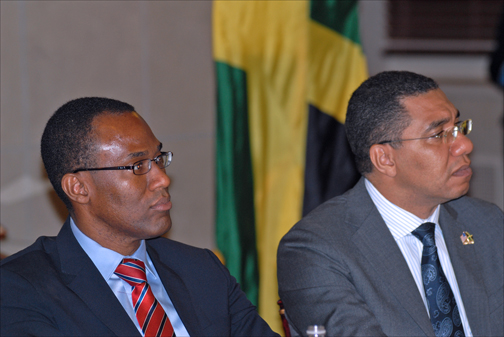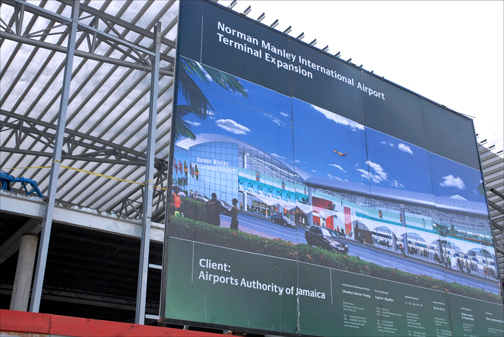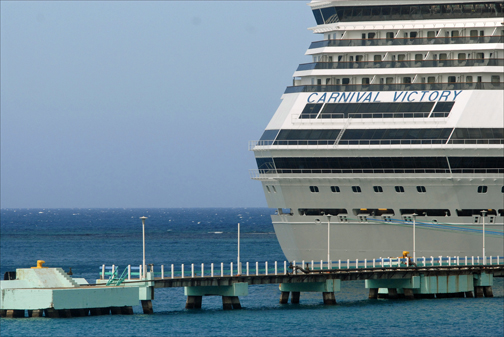Op-Ed: Jones Act shackles Puerto Rico

The government of Jamaica announced Tuesday that the World Bank has agreed to provide technical assistance in respect of preparing a master plan to create a Caribbean logistics hub in anticipation of completion of the Panama Canal Expansion Project in 2015.
This plan would build upon current trends whereby maritime traffic is shifting from Puerto Rico to its main competitor Jamaica and takes advantage of the Jones Act restrictions on Puerto Rico.
The proposed Jamaica logistics hub would act as a transshipment point for the Caribbean, Latin America and the U.S. East and Gulf Coasts akin to the other major maritime transportation centers elsewhere in the world, notably, Rotterdam, Singapore and Dubai.
Not only does the government of Jamaica and the World Bank foresee substantially greater maritime traffic significantly expanding the island’s transportation sector, but anticipates the dynamics of the hub will create opportunities for other industries including information and communications technology and manufacturing.
The American Shipper reported, “Giorgio Valentini, World Bank Group representative to Jamaica, called the logistics hub initiative ‘transformational’” during a recent speech in Kingston.
“It is important to emphasize that the hub is not just about the port, it involves many moving parts and will significantly enhance Jamaica’s potential for growth,” he said.
The prospects for the development of a Caribbean logistics hub will depend upon competitive local and regional shipping rates to distribute cargo from and feed cargo to the hub, and that will require international shipping free of cabotage restraints.
The relationship between the viability of a shipping hub and cabotage, in particular, the U.S. Jones Act, was addressed by the Federal Reserve Bank of New York in its June 29, 2012, “Report on the competitiveness of Puerto Rico’s economy.”
The New York Fed stated, “Puerto Rican ports have lagged other regional ports in activity in recent years…over the past decade, the port of Kingston in Jamaica has overtaken the port of San Juan in total container volume, despite the fact that Puerto Rico’s population is roughly a third larger and its economy more than triple the size of Jamaica’s. The trends are stark: between 2000 and 2010, the volume of twenty-foot containers more than doubled in Jamaica, while it fell more than 20 percent in Puerto Rico.”
“It costs an estimated $3,063 to ship a twenty-foot container of household and commercial goods from the East Coast of the United States to Puerto Rico; the same shipment costs $1,504 to nearby Santo Domingo (Dominican Republic) and $1,687 to Kingston (Jamaica) — destinations that are not subject to Jones Act restrictions,” explained the New York Fed.
The importance of the Panama Canal Expansion now scheduled for completion in 2015 is that so-called “Post Panamax” containerships of up to 13,000 TEU (twenty-foot equivalent units) that are approximately three times the size of the containerships that can currently transit the canal known as “Panamax” with a maximum capacity of approximately 4,500 TEU. (See U.S. Army Corps of Engineers – Institute for Water Resources (IWP), Port and Inland Waterways Modernization Preparing for Post Panamax Vessels, June 20, 2012.)
The greater containership capacity that will be enabled by the expansion project will realign international shipping trade lanes. For example, at present, it is uneconomical to operate a container service between Atlantic and Asian ports via Panama Canal because a Panamax containership is too small to offset the costs of a voyage, so services employing economical larger ships are currently routed via Suez Canal.
This is expected to change once the Panama Canal Expansion Project is completed significantly increasing the traffic passing through the Caribbean and providing Jamaica with the cargo volumes to realize its logistical hub goals.












Some have blamed the Jones Act for many of Puerto Rico’s economic woes. But the writer’s home state of Hawaii shows that this argument is perhaps overstated. Hawaii is also subject to the Jones Act, but it has an unemployment rate of about 5 per cent and is in among the top ten states with the lowest unemployment.
At over 13%, Puerto Rico’s unemployment is the worst in the U.S. Puerto Rico’s labor participation rate is also far below Hawaii’s.
The shipping industry may be better suited for low wage countries. It also comes with potentiallly heavy environmental and aesthetic costs.
I see higher margin in activities that do not threaten Puerto Rico’s physical beauty or natural environment. In the long run, people will pay more to enjoy these resources. Hawaii can probably attest to that. It’s tourism income is about $12 billion or more than 3 times that of Puerto Rico.
If only Puerto Rico’s policymakers would steer our economy in this direction and get out the race to the bottom with other countries in pursuit of low-wage manufacturing that blights our scenery and environment.